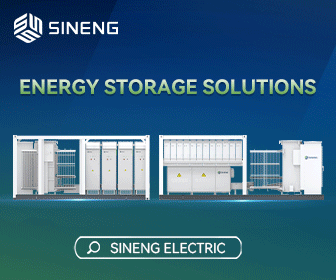Beyond Lithium: Zinc will enable the energy grids of the future
Pick up a newspaper and it's more likely than not you'll see a mention of lithium's role in electric vehicles and, increasingly, energy storage. These batteries serve valuable purposes, but what you don't see mentioned are the limitations of the applications of lithium batteries: insecure supply chains, risky flammability, and inadequate recyclability.
It's not a matter of "if", but "when" all the complements and alternatives to lithium gain the prominence they deserve. It's time to bank on zinc's promising role in the energy systems of the future.

Zinc is exceptionally well suited to electrochemical storage. That's why it was the key ingredient in the world's first battery, and why it still powers all the AA, C, and D batteries in our homes. As global requirements for energy storage become more demanding and complex, a range of new zinc-based technologies have emerged to innovate and advance the capability of batteries to provide our increasingly challenging global energy needs.
Sustainable, safe and cost-effective
Zinc-based batteries are top-of-class in sustainability, safety and cost. That's because zinc is one of the most abundant minerals on earth. More importantly, it offers stable end-to-end supply chains that are already present in each major region. North America claims many leading producers of zinc batteries; these companies are able to produce finished products while sourcing directly from domestic mines and refiners.

Zinc is a safe mineral used widely as a vitamin supplement, in agricultural feed, and as a key ingredient in sunscreen. Zinc batteries have zero risk of flammability, do not require special safety systems or hazardous labels while shipping, and benefit from a well-established recycling process.
Long Duration Storage
The power grid challenges in Texas earlier this year expedited conversations around Long Duration Storage. Extended storage offers big advantages such as better utilization of renewables by providing power during long periods without sun or wind - electrifying buildings during extended power outages, and enabling more efficient peak shifting by storing inexpensive electricity generated at night to be used during peak hours.
Enter zinc batteries. Zinc achieves lower cost than lithium even in many daily cycling applications, and the cost advantages of zinc can increase substantially in longer duration applications. Analysis on the levelized cost of storage ranks zinc as the lowest levelized cost technology for overall peak shaving and use in commercial and industrial applications.
 What's more, the long duration storage space is a large market segment well positioned to continue to unfold for some time. In a recent study, the California Energy Storage Association found that California alone will require 11+ GW of long-duration storage (here defined as >5 hours) by 2030, and 45-55GW by 2045. This need is only going up year on year, and we expect to see a large inflow of investment into the zinc-based technologies that are leading the way.
What's more, the long duration storage space is a large market segment well positioned to continue to unfold for some time. In a recent study, the California Energy Storage Association found that California alone will require 11+ GW of long-duration storage (here defined as >5 hours) by 2030, and 45-55GW by 2045. This need is only going up year on year, and we expect to see a large inflow of investment into the zinc-based technologies that are leading the way.
Long duration needs apply to more than just connecting renewables to the grid. The capabilities of zinc batteries to store energy over extended periods make them perfectly suited to remote and off-grid areas, where they will primarily replace environmentally unfriendly diesel generators and serve a critical role as backup power for multiple days in the event of a grid outage (caused by fires in California, severe cold in Texas, or other natural disasters).
Unmatched Safety
Zinc batteries are non-toxic and non-flammable, making them one of the safest chemistries available. Not only can they be transported, installed, and maintained worry-free (unlike their leading counterparts), they also do not produce off gassing or run the risk of thermal runaway, which often causes lithium batteries to self-ignite. This inflammability means that zinc batteries don't require the additional thermal management or fire suppression systems needed by other battery alternatives. As a result, they are not only an affordable option, but one of the safest.
The Battery of the Future
One of the biggest concerns with the continued use of lithium-ion batteries is future availability. Lithium raw materials are relatively scarce and, in many cases, are located in politically unstable regions or environmentally-sensitive areas such as the Atacama salt flats of Chile. Zinc is the fourth most used metal in the world, and five times more abundant than lithium in the Earth's crust. The global availability coupled with a stable supply chain gives zinc the ability to meet future demand for centuries to come.
Leading battery producers are working with the International Zinc Association to connect with miners and refiners across the entire supply chain to ensure materials meet the highest technical and environmental standards.
What's Next?
Not only do zinc batteries have an esteemed past, they have a bright future.

The performance and cost advantages of zinc-based technologies will become increasingly valuable as the need for energy storage grows and enters more applications. Discerning customers and investors are taking note of the unparalleled sustainability and safety aspects of zinc battery systems and appreciate the option to purchase products with full domestic supply chains.
As it stands today, the adoption of zinc batteries is a no brainer. With increasingly complex energy demands, environmental, safety, cost, and geopolitical concerns, zinc batteries are primed to make their mark as the energy storage of the future.
As ZBI Manager, Morgan Frederick manages the Zinc Battery Initiative on behalf of the International Zinc Association. The ZBI is a coalition dedicated to the advancement of critical technologies for battery storage. He is also Director of Vendal Resources, a trader of metals and minerals.
Zinc Battery Initiative| www.zincbatteryinitiative.com
Author: Morgan Frederick
Volume: 2021 May/June









